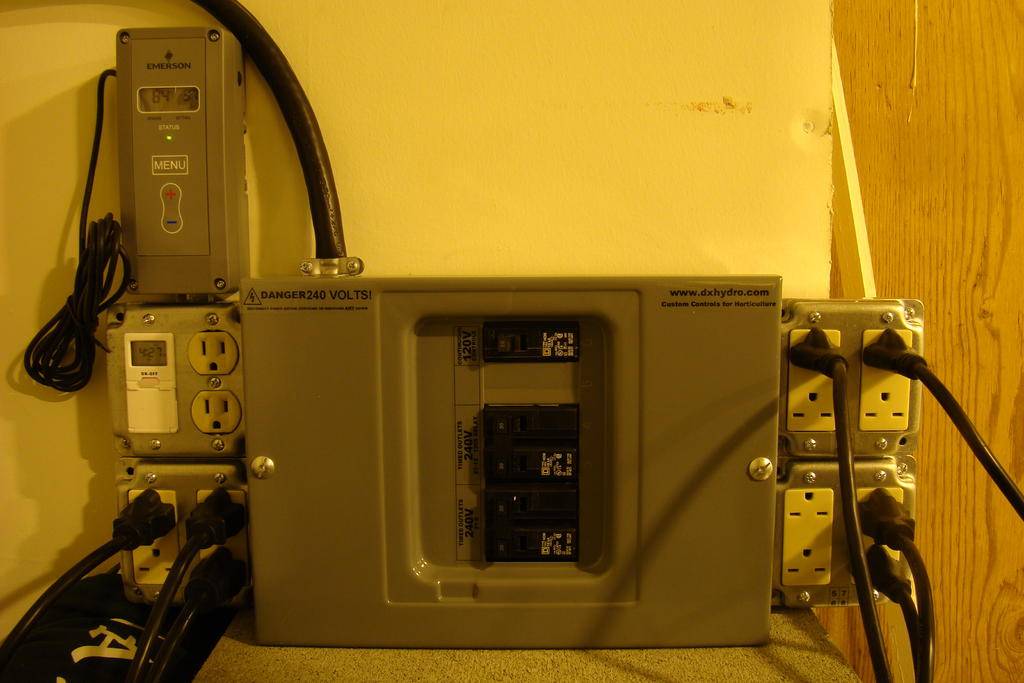Great price, and worked exactly as advertised.
I will be buying more of these.

I will be buying more of these.
View Image
View Image
well if u like looks of this wait till u see what it produces!!! dxhydro set me straight and walked me through it, this thing will do everything high temp cut off for each room , co2 monitered ,aux ac/fan,fire sensor,remote power drops for each room with cont and timed outlets (for vertical fans), cycle timed outlet for uv sterilizers, and of course 10000 watts flower room and 6 000 watts of veg room ....plus run 4 ton ac 3 split unit. AND mr. coffee machine and vaporizer!!!!
thanks for all guidance dan
now time to make the carbon scrubbers!!!!!!!!!!!!!!!!!!!!!!!!!!!!!!!!!
No, in fact it is not perfectly safe to run 15-20amp components behind 30-50 amp circuit breakers. I don't know where you are coming up with your rationale, but please go back and look at the the link that I provided to the actual code reference for DX's justification, then tell us how many people are using these controllers in that precise scenario (the only instance allowable by code).
The justification that "other people are doing it" flies just about as well as when my kids used it as an excuse for doing something stupid. CAP, for instance, provides their "universal" receptacle that will accept either 120 or 240 volt plugs. This breaks a hundred years of codes and standards that have lulled people into thinking that electricity is tamed and harmless. In fact, there is an invisible, potentially lethal, snake residing in your walls that is incredibly vigilant - screw up with it, and a fraction of a second later, you are going to know it.
*edit* If you think that I am attacking DX here, you are incorrect. I have repeatedly recommended his product in the past, with the caveat that the buyer specify what they want built. I think that the option of custom-building the controller gives him a huge leg up on the competition. However, this particular aspect of his stock controllers is very worrisome.
When used for their intended purpose, which they are purpose built. I will stand behind my statement.
I think telling folks their purchase is unsafe, isn't completely straight. Especially since many are getting away from the real dangerous 15 amp heavy duty timers with a 1k or 2 600s stabbed into it.
Moving up from a typical timer based setup to the dx unit is a leap forward in safety.
View Image
View Image
well if u like looks of this wait till u see what it produces!!! dxhydro set me straight and walked me through it, this thing will do everything high temp cut off for each room , co2 monitered ,aux ac/fan,fire sensor,remote power drops for each room with cont and timed outlets (for vertical fans), cycle timed outlet for uv sterilizers, and of course 10000 watts flower room and 6 000 watts of veg room ....plus run 4 ton ac 3 split unit. AND mr. coffee machine and vaporizer!!!!
thanks for all guidance dan
now time to make the carbon scrubbers!!!!!!!!!!!!!!!!!!!!!!!!!!!!!!!!!
I don't think many things in most grow rooms would pass code. Including simply buring a hid light outside of an approved sealed enclosure, yet almost everyone does it.
Running an inductive load HID fixture off of a timer with an under rated relay, overloading circuits, powerstrips. these are fire starters. Upgrqading to a DXsoundco, CAP powerbox etc.. is a step in the right direction. Like everything else in your kit, there is a certain amount of responsibility from the end user to use it right.
that said, rives, I know you know your shit and are technically correct. enjoy your posts and don;t disagree 100% with you.
and I have no relationship with dx or own any of his gear.